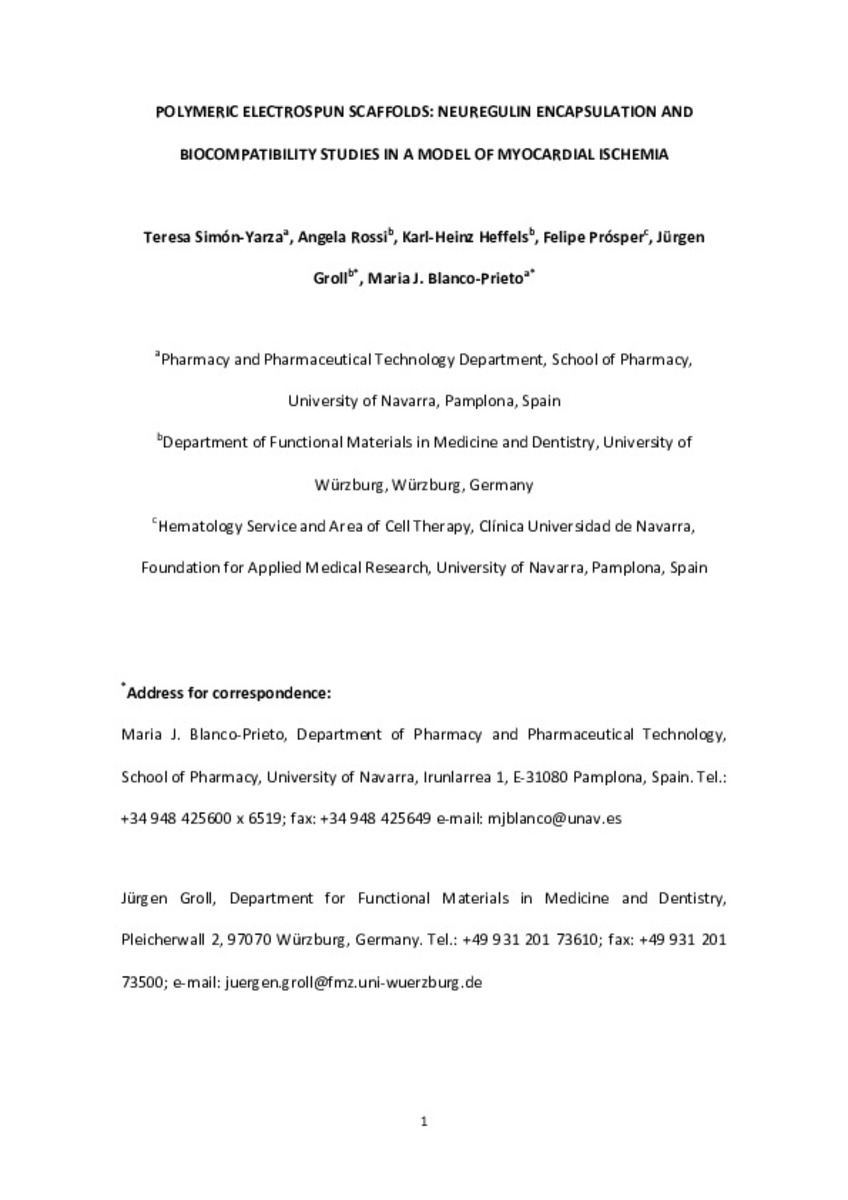Polymeric electrospun scaffolds: neuregulin encapsulation and biocompatibility studies in a model of myocardial ischemia
Palabras clave :
Neuregulin
Scaffold
Tissue engineering
Cardiovascular disease
Biocompatibility
Materias Investigacion::Ciencias de la Salud
Fecha de publicación :
2015
Editorial :
Mary Ann Liebert
Nota editorial :
Final publication is available from Mary Ann Liebert, Inc., publishers http://dx.doi.org/10.1089/ten.tea.2014.0523
Cita:
Simón-Yarza T, Rossi A, Heffels K.H, Prósper F, Groll J, Blanco-Prieto M.J. Polymeric electrospun scaffolds: neuregulin encapsulation and biocompatibility studies in a model of myocardial ischemia. Tissue Eng Part A. 2015 March
Aparece en las colecciones:
Estadísticas e impacto
0 citas en

Los ítems de Dadun están protegidos por copyright, con todos los derechos reservados, a menos que se indique lo contrario.








